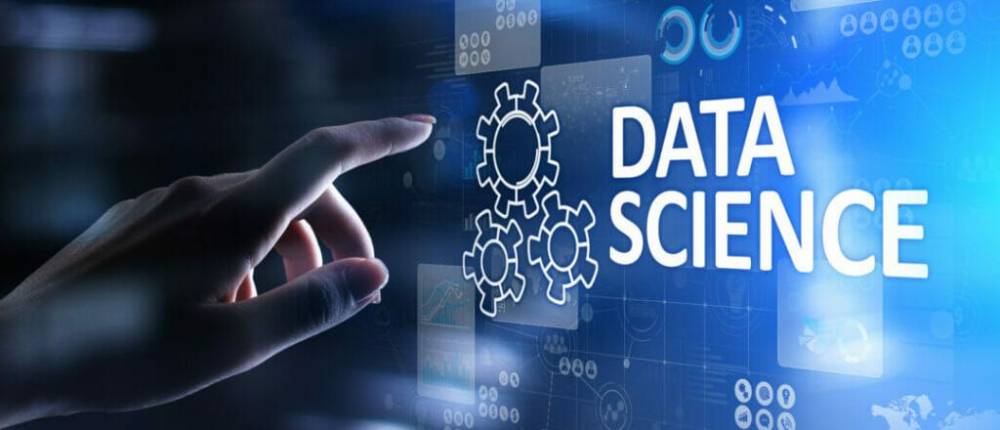
ALL YOU NEED TO KNOW ABOUT DATA SCIENCE
ALL YOU NEED TO KNOW ABOUT DATA SCIENCE
As the name implies, Data Science is the study of data retrieval and analysis with the goal of identifying hidden information and correspondences in raw data, which is unprocessed information that has not been processed. One way individuals enhance their expertise in this field is by undertaking a data scientist course. To put it another way, data science is the science of combining programming abilities with mathematical and statistical knowledge in order to extract meaningful information from large amounts of information
Data science is the application of machine learning algorithms to numerical, textual, image, video, and audio content. It is a broad term that includes a variety of subfields. The algorithms perform specific tasks related to the extraction, cleaning, and processing of data in order to generate information that can be converted into real value for each individual organization.
Is Data Science and Business Analytics interchangeable terms?
The terms Data Science and Business Analytics are frequently used interchangeably in the industry. After all, both Business Analytics and Data Science are concerned with data, including the acquisition of data, the development of models, and the processing and analysis of data.
In this context, what is the difference between Data Science and Business Analytics to be made? In line with its name, Business Analytics entails the analysis of business or sectoral data in order to extract information that is useful to the business, particularly information about the market and competitors.
But data science is concerned with the impact of customer behavior on a company's financial results, rather than with the impact of customer behavior on a company's financial results per se. Information Technology (IT) and Data Science (DS) are two fields of study that bring together the power of data with the development of algorithms and the application of technology to answer various questions. Recently made advancements in machine learning and artificial intelligence have propelled data science to previously unimaginable levels of achievement and success. While business analytics has evolved, it remains a method of analyzing business data using statistical concepts in order to obtain solutions and in-depth analysis by correlating historical data to current information.
Why should you use Data Science?
In order to answer the questions posed by businesses, the Data Science team's goal is to identify the most significant datasets and to elaborate on them in order to extract new data about behaviors, needs, and trends that will serve as the foundation for their managers' data-driven decisions.
It is possible that the information gathered in this manner will assist an organization in reducing costs and increasing efficiency, identifying new market opportunities, and improving its competitive advantage.
Is it possible for the data to be used to generate additional information that is useful? Without a doubt, yes! When data and their relationships are understood, they can be analyzed, but most importantly, they can be extracted for their value and ensure that, when properly interrogated and correlated, they generate information that is useful for not only understanding but also orienting the phenomena.
Business leaders who are undergoing digital transformation must understand data science because it enables them to target their products or services at specific segments of the market, analyze their purchasing behavior, and respond to their needs. Data scientists have created applications that are used by leading global companies such as Netflix, Amazon, and Spotify.
According to the individual user's preferences, artificial intelligence enables the development of recommendation engines that suggest products to buy, music to listen to, and films to watch based on their preferences. Because of the machine learning process, these algorithms are also capable of determining which suggestions did not pique the user's interest, which allows for further refinement of the proposals, thereby increasing conversions and optimizing the return on investment.
The process of data science
Data science is primarily employed in the prediction and analysis of trends. Additional tools such as predictive analysis, prescriptive analysis, and machine learning tools were used to assist in making decisions in the field.
1. Prescription analysis: A prescriptive analysis model, on the other hand, is required if you want to create a model or pattern that uses artificial intelligence to make autonomous decisions and that is constantly updated through dynamic self-learning functions. In this relatively new subfield of Data Science, the data scientist is tasked with advising or directly assuming future behavior.
So, this model is capable of not only forecasting, but also suggesting or carrying out a series of prescribed actions. In this case, the self-driving car is the best example: the data collected by the vehicles is used to optimize the software that allows the car to drive itself. In addition, the model will be capable of autonomous decision-making, determining when to turn, which path to take, when to slow down or abruptly stop.
2. Predictive causal analysis: In order to make a prediction about the likelihood of a future event occurring, predictive causal analysis must be used in conjunction with the data analysis process. Consider the following scenario: a bank that makes loans wishes to forecast the likelihood that customers will repay the loan in the future. Here, Data Science makes use of a model that is capable of performing predictive analysis on the customer's payment history in order to forecast whether future payments will be received on time.
3. Predictions using machine learning: In order to build a model to forecast future trends, you must use supervised learning algorithms if your data comes from a credit card company and you need to forecast future trends. The term "supervised learning" refers to the fact that the data used to train the algorithm is already in the public domain. Consider the ongoing optimization of the voice recognition capabilities of Alexa or Google's voice assistants.

